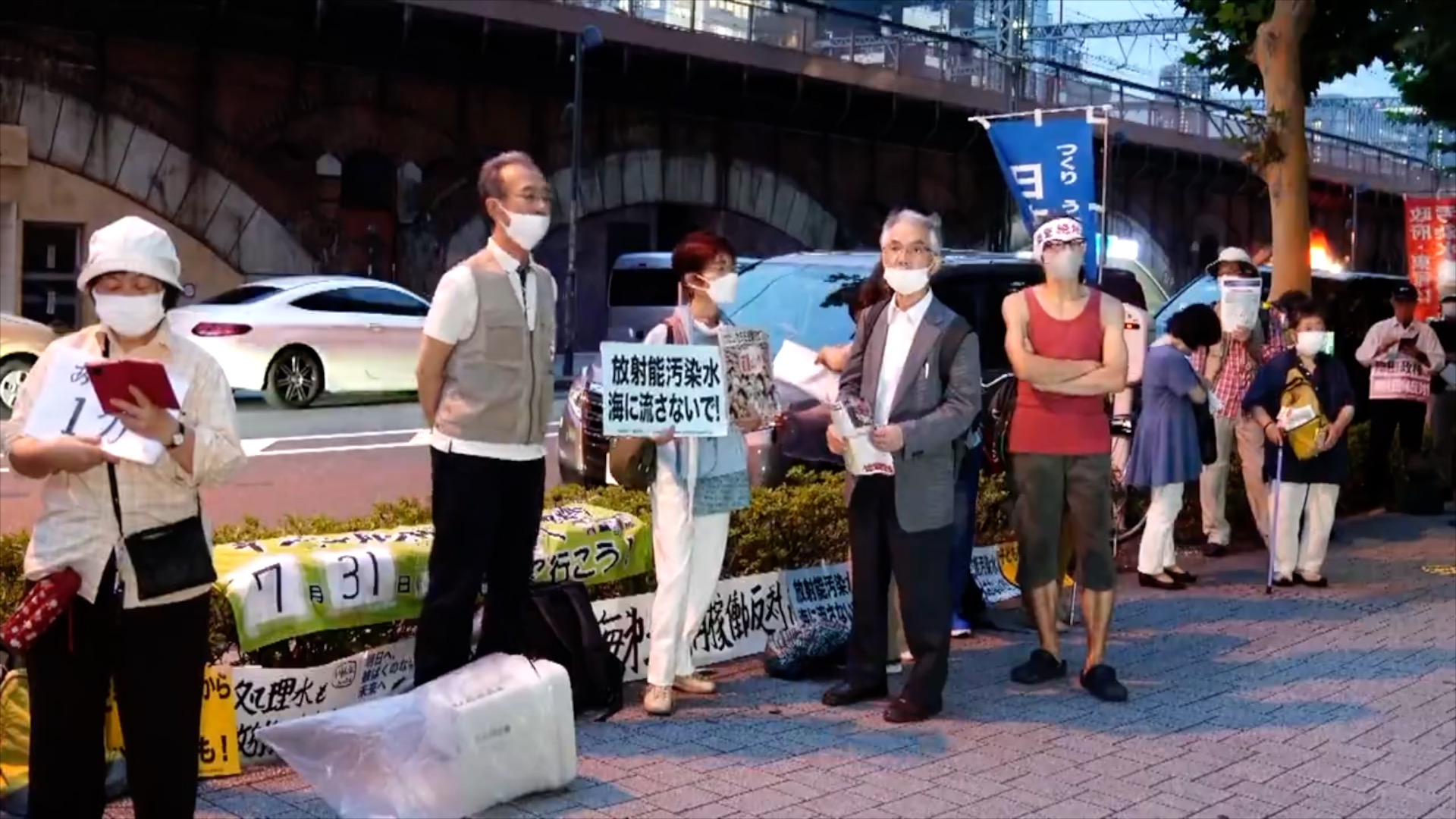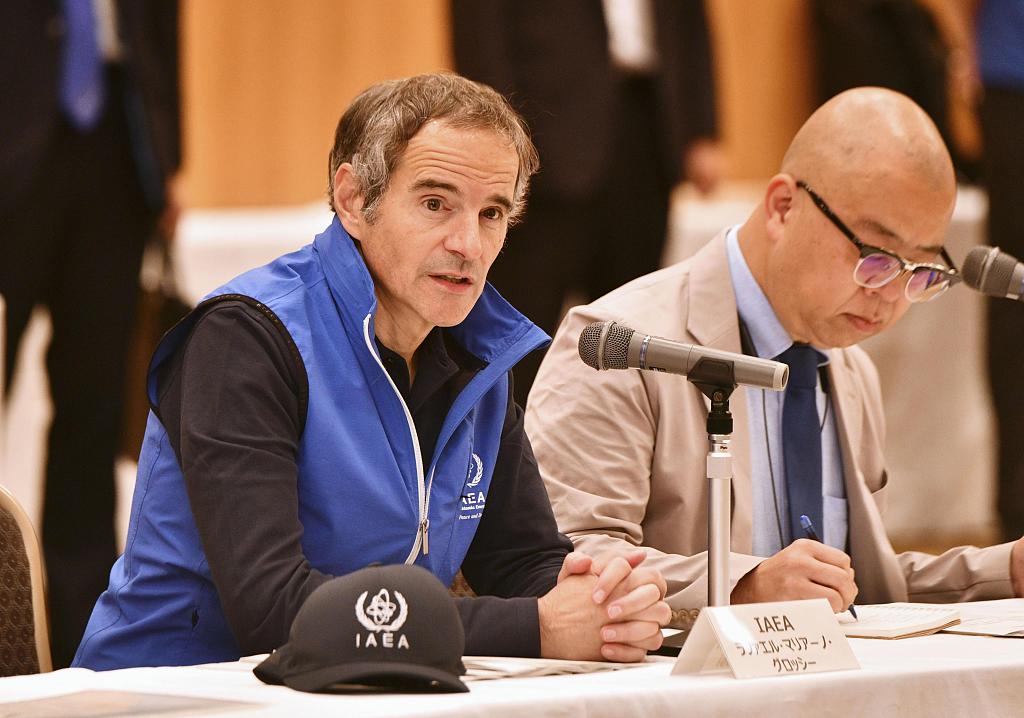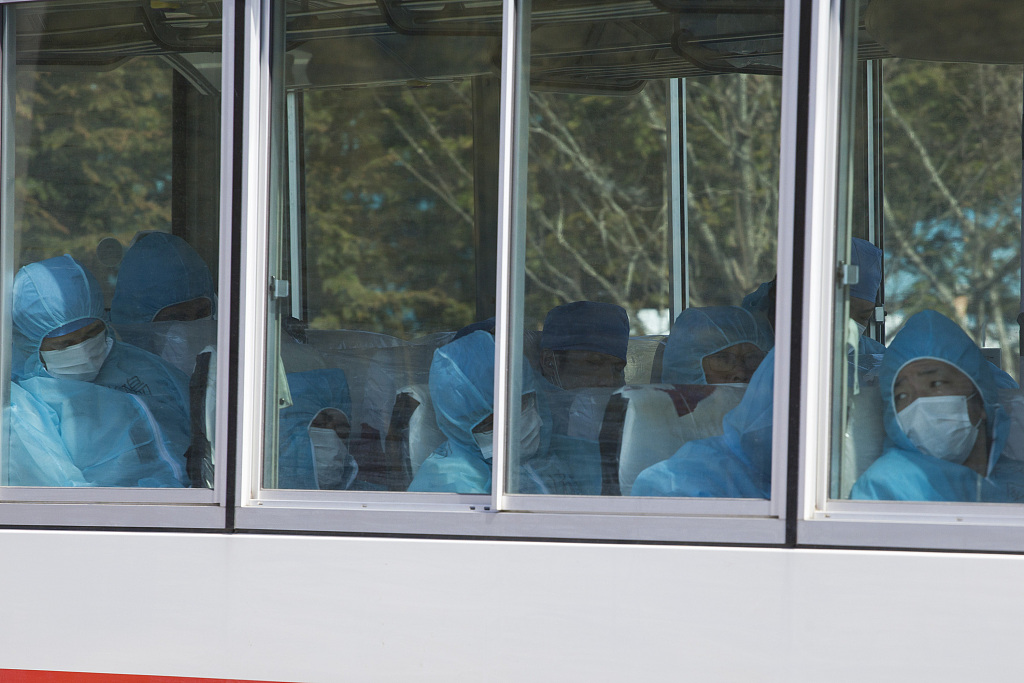Editor's Note: In this three-part series, CGTN aims to shed light on Japan's contentious decision to release treated radioactive water from the tsunami-ravaged Fukushima Daiichi nuclear plant into the ocean. Tokyo has announced that it will proceed with its plan as early as August despite overwhelming concerns among environmentalists, scientists and neighboring countries. In this part of the series, CGTN examines how after considering other options that could potentially address the issue of radioactive water in a safer and more sustainable manner, Japan chose to minimize its own costs and risks.
Radiation fears still persist after the International Atomic Energy Agency (IAEA) said in its report that Japan's plan to dump nuclear-contaminated wastewater into the Pacific Ocean was "consistent with global safety standards."
Nearly a hundred Japanese protesters gathered on Wednesday to rally against Japan's plan, expressing their grave concern over the final report by the UN nuclear watchdog.
There is no precedent for discharging wastewater into the ocean after a nuclear accident, and no human being has ever experienced such a thing, so there are very many uncertainties to consider, and such a plan by Japan is too hasty and irresponsible, Zhang Yanqiang, professor of international law at Dalian Maritime University and director of the Institute for Yellow Sea and Bohai Studies, told CGTN in an interview.
The IAEA report came two years after the Japanese government announced its ocean discharge plan in April 2021 and "officially OK'd it" in July 2022.
"Long before the IAEA working group completed its assessment and released the final report, Japan had already unilaterally approved the plan. This has raised serious doubts about Japan's sincerity in the international community," Chinese Ambassador to Japan Wu Jianghao said on Tuesday at a press conference.
01:14

The 'cheapest way' and 'the minimal risk' to Japan
Responding to Japan's plan, which "puts money above human life and health," the Chinese Foreign Ministry said that the Japanese side is most concerned about how to reduce economic costs, rather than how to maintain the marine ecological environment and human life and health.
For the disposal of nuclear contaminated water, there are multiple approaches such as long-term storage, hydrogen release, ground injection, underground burial, and vapor release.
However, the Japanese side chose to minimize its own costs and risks while letting the world take nuclear contamination risks that could have been avoided, the ministry said.

International Atomic Energy Agency Director General Rafael Grossi (L) speaks at a meeting with Japanese central government officials and municipal government heads held in Iwaki in the northeastern Japan prefecture of Fukushima, July 5, 2023. /CFP
International Atomic Energy Agency Director General Rafael Grossi (L) speaks at a meeting with Japanese central government officials and municipal government heads held in Iwaki in the northeastern Japan prefecture of Fukushima, July 5, 2023. /CFP
For years, TEPCO, having operated the plant and now overseeing its decommissioning, has built over 1,000 massive tanks to contain 1.32 million metric tons of wastewater, which is enough to fill more than 500 Olympic pools.
Some concerned area residents argued the contaminated water should be kept for longer through adding more tanks, and that it should not be released into the sea. Also, environmental groups have pointed out that there is actually land around the intended site for the construction of Units 7 and 8 of the plant that could be used to build water storage tanks, which are expected to store decades' worth of wastewater.
But the company and the Japanese government said that it needs to free up space on the grounds that "the capacity to add tanks can be very limited" due to a shortage of available land and it would take a lot of time to coordinate with local governments and more work to transport nuclear wastewater over long distances.
On many occasions, Japanese officials have said that Japan considered five options. However, in April 2021, the government approved the controlled release of the water into the sea, reasoning that "nuclear facilities around the world had routinely and safely" done this and it would be easier to monitor.
The Japanese side said that nuclear power plants are all discharging, but what other plants discharged is normal cooling water, not contaminated water that has come into contact with the accident core, Wu said at the presser.

Teams of clean-up workers wearing protective suits and masks at the Fukushima Daiichi checkpoint return by bus from the forbidden zone, a radioactive area within a 15-mile radius from the site of the TEPCO Fukushima nuclear plant, March 12, 2013. /CFP
Teams of clean-up workers wearing protective suits and masks at the Fukushima Daiichi checkpoint return by bus from the forbidden zone, a radioactive area within a 15-mile radius from the site of the TEPCO Fukushima nuclear plant, March 12, 2013. /CFP
As a state-owned company and once the largest electric company in Japan by revenue, TEPCO claimed itself being through a "worsening financial state" because of the burden of decommissioning the wrecked plant and paying compensation.
The estimated cost of discharging nuclear-contaminated water into the sea is $14 million to $28 million and the estimated cost of solidifying it and burying it in the ground is dozens or even hundreds of times the cost of discharging it into the sea, China Media Group reported.
Calling the IAEA's report "ill-advised and premature," Robert H. Richmond, an international scientist working with the Pacific Island Forum to assess the wastewater release plan – including conducting visits to the Fukushima site, and meetings with TEPCO – said that "this is an ultimate opportunity for (Japan and the IAEA) to change the way in which business is being done for the better," he added.
Why are they doing this?
The Fukushima reactors melted down in March 2011 after a devastating earthquake and tsunami knocked out the power supply and cooling system, contaminating water within the plant.
The resulting nuclear accident was the worst since Chernobyl, and the clean-up has lasted more than a decade, with most areas declared off-limits due to radiation now reopened.
TEPCO emphasized that the contaminated water, being treated with a filtration system called Advanced Liquid Processing System (ALPS) to remove most radioactive material, would be diluted to almost-background levels.
"The standards for contaminated water resulting from the nuclear accident need to be reset," Zhang said. "The IAEA's standard is the standard for testing nuclear wastewater discharged from nuclear power plants in normal operation, but this standard cannot be used to test the water treated with ALPS in Fukushima."